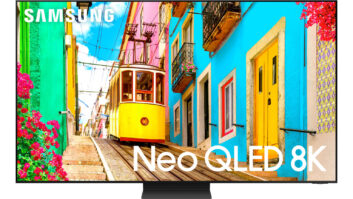The embryonic ATSC digital television system took on new dimensions at last week’s National Association of Broadcasters’ Convention, where plans for the first DTV data-enhancement applications began to take shape.
In one of the bigger announcements of the show, Intel and NBC said they will work together on an interactive enhanced digital television system that will adapt Intel’s Intercast news data transmission technology for use with the ATSC digital platform. Also at the show, DBS operator EchoStar demonstrated its WebTV-enhanced Dish Network IRD and announced new channels for its upcoming PC-data broadcasting platform, while Thomson and Zenith pushed their XCA DTV copy-protection format.
In its deal with NBC, Intel said it will offer software and tools to adapt Intercast applications to the digital platform. Previously, Intercast relayed data content through the vertical blanking interval of an analog TV signal. The new system will insert Intercast data packets into the DTV digital broadcast stream, to be received with properly configured digital television sets, DTV set-top decoders and DTV-enabled PCs, the companies said.
NBC plans to use the technology to broadcast DTV standard-definition television (SDTV) programming enhanced with such interactive data overlays as an electronic program guide, sending electronic greeting cards, or taking interactive quizzes.
In addition to the clearer picture, HDTV can pack much more information into digital form, allowing the interactive features that NBC is planning.
NBC said it plans to offer the service for an average of three hours a week in its Saturday-morning block of teenage programming and sports events. The network said it will also offer some enhanced broadcasting during daily prime-time programming.
Meanwhile, NBC said it will offer its first regularly scheduled HDTV broadcast April 26, with Jay Leno’s Tonight Show. NBC will produce the show in the 1080i HDTV format using a DTV production studio. Beginning April 30, the network will also air in 1080i format the weekly Friday Night program, which follows the Leno show on Fridays and is produced in the same studio.
In other news, EchoStar gave broadcasters a demonstration of some of its “convergent” technologies, including the new DishPlayer IRD that incorporates a WebTV terminal, hard drive and Dish IRD in one set-top box. Both JVC and EchoStar plan to market the device this year (see related JVC story in News).
The satellite operator also said it has added three interactive channels – LAUNCH Media, RollingStone.com and SuperMarkets Online – to its satellite-carried data service for PCs and PC-enabled televisions (such as Gateway’s Destination 2000 products).
The high-speed data-broadcast system is scheduled to debut this winter. In addition to on-demand interactive multimedia, the service will let users download software, video games and electronic publications.
The three new Internet “channels” will join previously announced services: Bloomberg Financial Markets, The Weather Channel, MediaX, Pseudo Programs, Tech Talk, EMNetwork, Salon Magazine and E! Online.
Also at NAB, DBS provider DirecTv said it has reached an agreement with Hewlett-Packard to provide on-air digital storage and playback video-server systems for DirecTv’s uplink facility in Castle Rock, Colo.
Programming handled by HP’s MediaStream server 1600 will include short-form promotional spots, interstitial and longform sporting events. The HP servers will replace tape machines and provide additional storage.
Also at NAB, Zenith and Thomson offered copy-protection demonstrations in a push for their XCA (Extended Conditional Access) copy-protection format they have proposed for DTV broadcasting.
The two companies are opposed to the rival 5-C (for five companies) system proposed by Hitachi, Intel, Matsushita, Sony and Toshiba.
Among other things, Zenith and Thomson said their XCA system will limit the ability of third parties (such as cable operators, movie studios or hackers) from disabling consumer equipment deemed to be operating in violation of copyright laws. The 5-C proposal would allow remote device “revocation” under certain conditions. (See the May 10 issue of TWICE for expanded NAB coverage).













